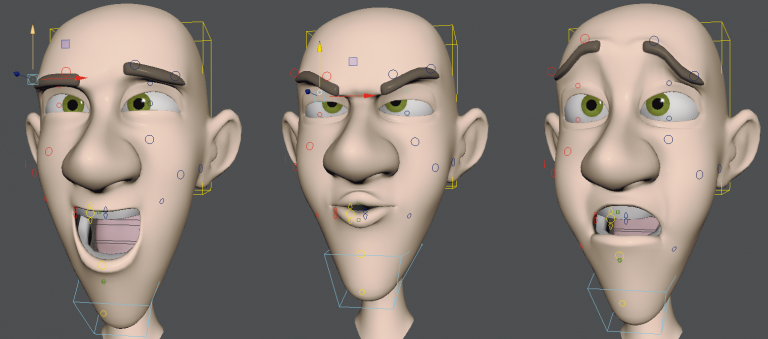
The size of the plates gives your joints a natural limit, preventing the animators from breaking model.Ī Simple Skin-Based Method for Fast Setupīut the best thing about this approach is the simplicity of the skinning.In this way we were able to use the same basic rig to also rig cartoony animals with completely different proportions. Easily make or remove plates to create a custom character.Have 1 controller moving concave while a nearby one moves convex for creating overlapping or fat-bulging effects with only standard skinning.Constrain the plates to the rig controllers or add Driven Keys for an additional layer of complexity/expression.Place them to match the face in a fairly complex way very quickly with only a few parameters and without having to do any modelling.But by having separate pieces, you have a few advantages: You could also use a single object like in the “Hybrid Approach to Facial Rigging”.
#FACE RIG DEMO SKIN#
Using the controller in Z lets you pull the skin off of the surface if you need to.

The animator uses the controller in X and Y, and you get a nice natural curved effect with less effort. Using follicles and geometry-based constraints, a joint follows the curvature of the nurbs, giving an effect of sliding over a rounded structure. By combining the two shapes, they can be concave, convex or saddle-shaped. The curvature of the plate is controlled by two blendshapes.
#FACE RIG DEMO SERIES#
I kept the amount of blendshapes down to only 8-10 per character, for special things like puckering and “eUsing a series of nurbs surfaces which are shaped to match the curvature of the character’s face. So we had to have a solution that didn’t have a lot of brute-force work for each character, such as requiring too many corrective blendshapes which would have to be re-done or tweaked with each modelling revision. But in this production we had a LOT of modelling revisions, client feedback and a small team! The process had to be simple and fast. In the past, my face rigs would have used dozens of blendshapes, based on Stop Staring. Eventually we hired a second rigger, but the process had to be modular and stream-lined. There was a large cast of characters, and I started the project alone. The face rig needed to be flexible and expressive, but it also needed to be fast to setup and swap between characters. And I took a session of Rigging Dojo where Brad Clark and the Dojo community really helped me push the quality of the rig. I based it off of some of the principles from “ A Hybrid Approach to Facial Rigging“. The cartoony face rig I developed was really interesting.


I just got back from an awesome summer vacation, travelling in South America! Now I’m back to work, developing some new Python animation tools and plugins (which I’ll blog about soon) and looking for new clients and projects for the coming year! Today I want to show you my new character rigging demoreel. Posted on Septemcategory: character-rigging A New Demoreel & My Cartoony Face Rig Structure


 0 kommentar(er)
0 kommentar(er)
